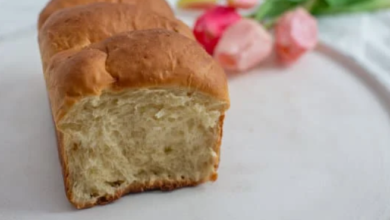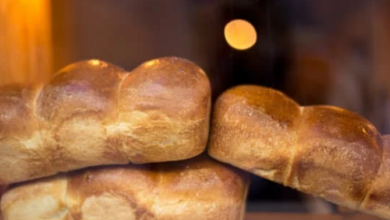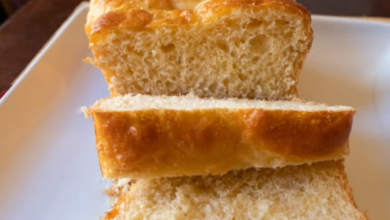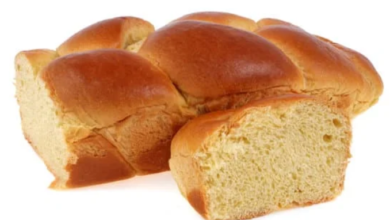What’S The Difference Between, Brioche Vs Regular Bread? Read This To Find Out!
What To Know
- Regular bread, with its versatility, is suitable for a wide range of culinary uses, including sandwiches, toast, and as an accompaniment to soups and stews.
- Whether it’s the rich and buttery indulgence of brioche or the versatile and humble nature of regular bread, the choice between the two is a matter of personal preference and the occasion.
- While brioche can sometimes be used as a substitute for regular bread, the high butter content may alter the flavor and texture of the dish.
In the realm of baked goods, brioche and regular bread stand out as two distinct culinary creations. While both share the commonality of being made from flour, water, and yeast, their unique characteristics set them apart in terms of taste, texture, and ingredients. This blog post delves into the fascinating world of brioche vs. regular bread, exploring their differences and providing insights into their culinary applications.
Origin and History
Brioche, with its rich French heritage, dates back to the 17th century. It originated in Normandy, France, and quickly gained popularity among the upper classes. Regular bread, on the other hand, has a more humble origin and has been a staple food for centuries across various cultures.
Ingredients
One of the key differences between brioche and regular bread lies in their ingredients. Brioche is characterized by its high butter content, which gives it a rich and buttery flavor. In addition to butter, brioche typically includes eggs, sugar, and sometimes milk. Regular bread, on the other hand, usually contains only flour, water, yeast, and salt.
Texture and Appearance
The high butter content in brioche results in a soft, fluffy, and almost cake-like texture. It has a golden-brown crust and a delicate crumb. Regular bread, in contrast, has a denser texture and a more rustic appearance. The crust is typically crispy, while the crumb is chewy and has a more open structure.
Flavor
The rich ingredients in brioche give it a distinct and luxurious flavor. The buttery notes are prominent, complemented by the sweetness from the sugar and eggs. Regular bread, on the other hand, has a more subdued flavor, with the earthy notes of the flour taking center stage.
Culinary Applications
Brioche’s rich flavor and soft texture make it ideal for sweet applications. It is often used in French pastries, such as croissants, pain au chocolat, and brioche buns. Regular bread, with its versatility, is suitable for a wide range of culinary uses, including sandwiches, toast, and as an accompaniment to soups and stews.
Nutritional Value
While both brioche and regular bread provide carbohydrates as their primary nutrient, their nutritional profiles differ. Brioche, due to its high butter content, has a higher fat content and calorie count compared to regular bread. Regular bread, on the other hand, is typically lower in fat and calories but may have a higher fiber content if made with whole-wheat flour.
Which One to Choose?
The choice between brioche and regular bread ultimately depends on personal preference and the intended use. Brioche is an excellent option for those seeking a rich and flavorful bread that can elevate sweet dishes. Regular bread is a versatile and economical choice for everyday use and can be enjoyed in various culinary applications.
Summary: The Brioche vs. Regular Bread Conundrum
Brioche and regular bread represent two distinct culinary creations, each with its unique characteristics and culinary applications. Whether it’s the rich and buttery indulgence of brioche or the versatile and humble nature of regular bread, the choice between the two is a matter of personal preference and the occasion. Understanding the differences between these two loaves empowers bakers and consumers alike to make informed decisions and elevate their culinary experiences.
Questions You May Have
Q: Which bread is healthier, brioche or regular bread?
A: Regular bread, especially if made with whole-wheat flour, is generally considered healthier due to its lower fat and calorie content and higher fiber content.
Q: Can I substitute brioche for regular bread in recipes?
A: While brioche can sometimes be used as a substitute for regular bread, the high butter content may alter the flavor and texture of the dish. It is recommended to adjust the recipe accordingly.
Q: How can I store brioche and regular bread to maintain freshness?
A: Store both brioche and regular bread in an airtight container at room temperature for up to 3 days. For longer storage, freeze the bread for up to 3 months.





